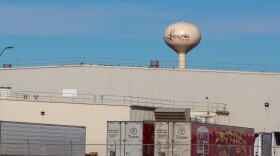Feral hogs do not have natural predators in the Americas, Asia and most of Africa, so they are damaging agriculture and recreational land as well as threatening native plants and animals.
But a new study published in the journal Global Change Biology shows that the damage wild pigs do to the ground also adds more carbon to the atmosphere.
“Wild pigs are an incredibly multi-threat species, more or less. They impact agriculture and biodiversity,” said Chris O’Bryan, a researcher at the University of Queensland in Australia and lead author of the study. “Our new study shows that they can impact soil carbon emissions.”
O’Bryan said that the damage results from the way feral hogs dig into the ground for food.
“As they are uprooting the soil, it exposes the soil to oxygen, so that’s one way in which the carbon is released. Because that promotes the rapid development of microbes that can then break down the organic material in the soil,” O’Bryan said.
The study shows that in the U.S. alone, the animals dig up an area the size of Puerto Rico, releasing carbon into the air. Worldwide, feral hogs are responsible for the same amount of carbon emissions as more than a million cars each year.
States including Oklahoma, Missouri, Kansas and Illinois have long dealt with feral hogs, as they multiply quickly and reduction strategies such as hunting and trapping have not slowed them down.
O’Bryan said the carbon footprint of wild pigs will likely increase in the coming years, and the impact of feral hogs on climate change should be the subject of additional research.
Follow Jonathan on Twitter: @JonathanAhl
Copyright 2021 Harvest Public Media. To see more, visit .








